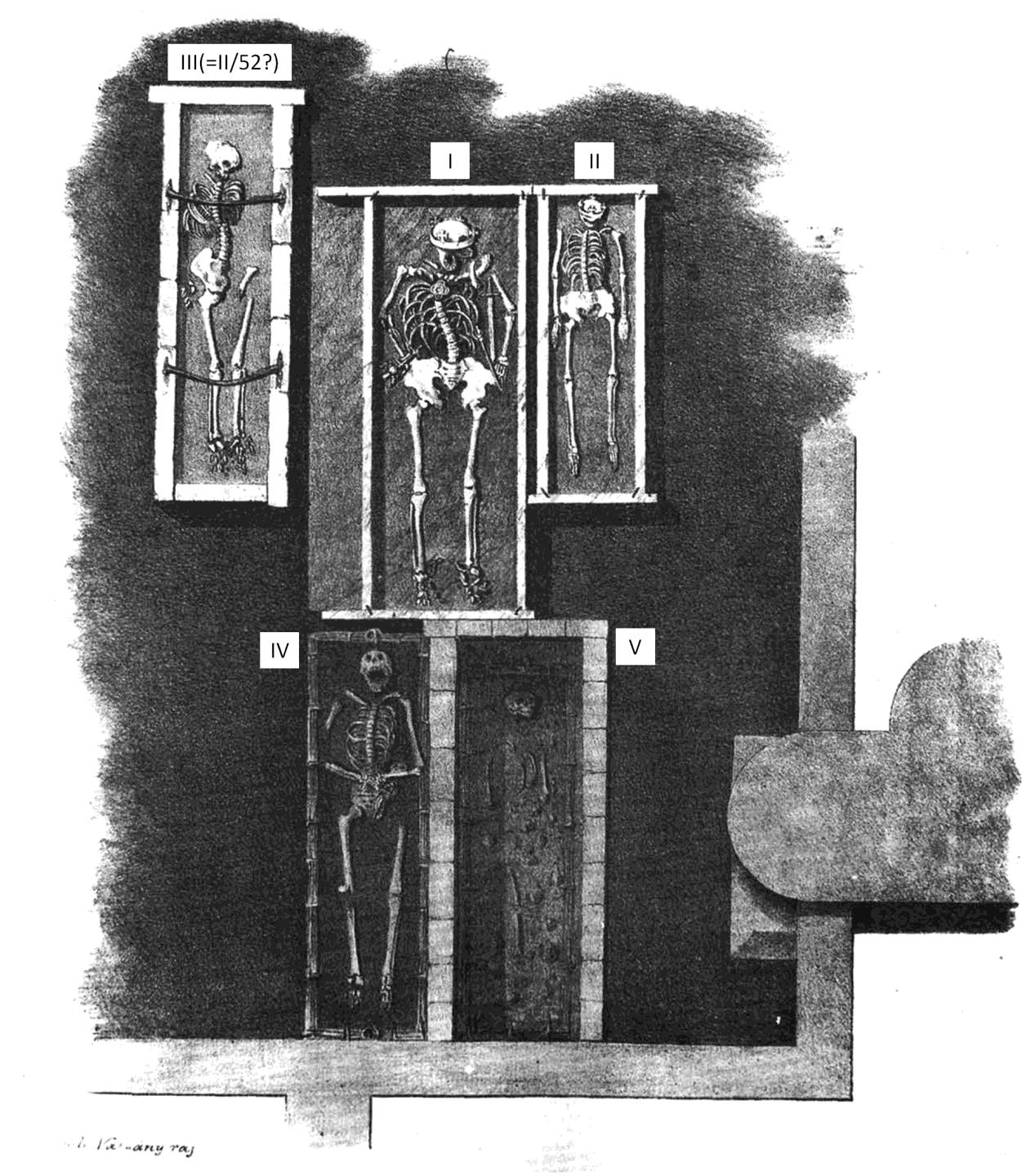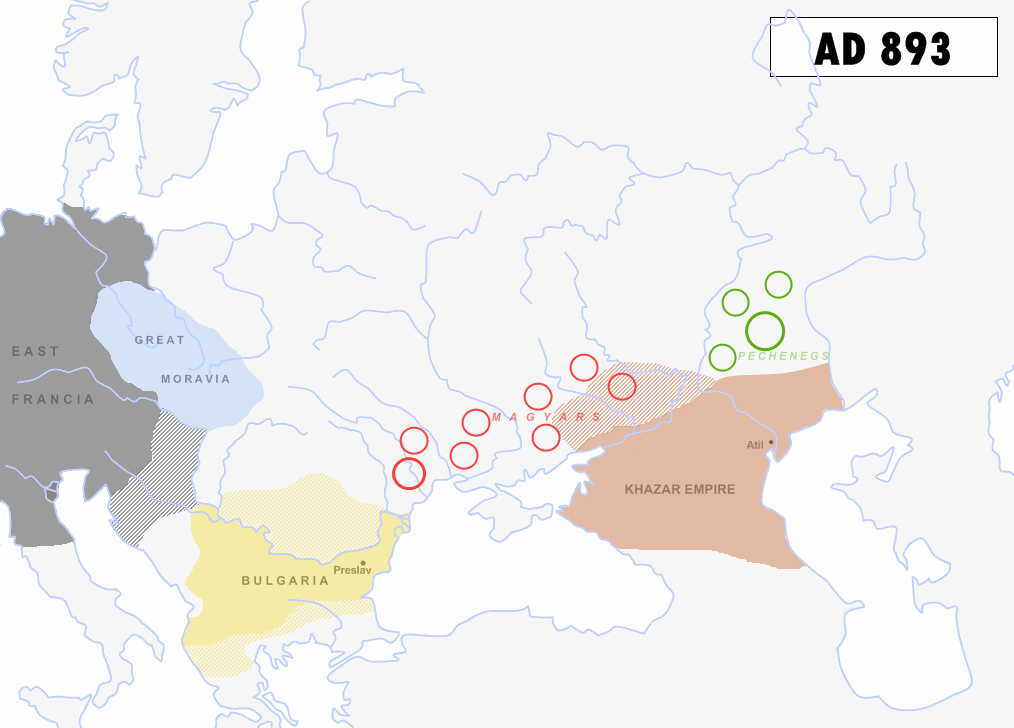Open access article DNA profiling of Hungarian King Béla III and other skeletal remains originating from the Royal Basilica of Székesfehérvár, Olasz, J., Seidenberg, V., Hummel, S. et al. Archaeol Anthropol Sci (2018).
Abstract
A few decades after the collapse of the Avar Khaganate (c. 822 AD), Hungarian invaders conquered the Carpathian Basin (c. 862–895 AD). The first Hungarian ruling dynasty, the Árpáds played an important role in European history during the Middle Ages. King Béla III (1172–1196) was one of the most significant rulers of the dynasty. He also consolidated Hungarian dominance over the Northern Balkans. The provostry church of the Virgin Mary (commonly known as the Royal Basilica of Székesfehérvár) played a prominent role as a coronation church and burial place of medieval Hungarian kings. The basilica’s building and graves had been destroyed over the centuries. The only royal graves that remained intact were those of King Béla III and his first spouse, Anna of Antioch. These graves were discovered in 1848. We defined the autosomal STR (short tandem repeat) fingerprints of the royal couple and eight additional individuals (two females and six males) found in the Royal Basilica. These results revealed no evidence of first-degree relationship between any of the investigated individuals. Y-chromosomal STR profiles were also established for all the male skeletons. Based upon the Y-chromosomal data, one male skeleton showed an obvious patrilineal relationship to King Béla III. A database search uncovered an existing Y-chromosomal haplotype, which had a single-repeat difference compared to that of King Béla. It was discovered in a person living in an area close to Hungary. This current male line is probably related paternally to the Árpád Dynasty. The control region of the mitochondrial DNA was determined in the royal couple and in the remains of the inferred relative. The mitochondrial results excluded sibling relationship between the King and the patrilineal relative. In summary, we successfully defined a Y-chromosomal profile of King Béla III, which can serve as a reference for the identification of further remains and disputed living descendants of the Árpád Dynasty. Among the examined skeletons, we discovered an Árpád member, whose exact affiliation, however, has not yet been established.
The Árpad Dynasty
The Árpád Dynasty (c. 850–1301 AD) played an important role in European history during the Middle Ages (Hóman 1940-1943). The first Great Prince Álmos organised the monarchic state in the northern region of the Black Sea c. 850. A few decades after the collapse of the Avar Khaganate (c. 822 AD), Álmos and his son Árpád conquered the Carpathian Basin (c. 862–895 AD) (Szőke 2014). During the conquest, Hungarian invaders, together with Turkic-speaking Kabars assimilated the Avars and Slavonic groups (Szádeczky-Kardoss 1990). Thus, most of the population in the Carpathian Basin originated from the Hun-Turkic cultural community of the Eurasian Steppe and was accompanied by Slavonic and German-speaking groups (László 1996). The origin of Hungarians is still controversial, and this paper cannot cover this complex subject. The Hungarian Great Principality represented the Eurasian steppe empires in Central Europe from c. 862 until 1000. Saint Stephen I, the last Great Prince (997–1000) and first King (1000–1038) of Hungary re-organised this early Hungarian state as a Christian kingdom. Saint Stephen received the royal crown from the Pope and joined the post-Roman Christian political system and cultural commonwealth of Latin Europe (Pohl 2003; Szabados 2011). Hungary remained an independent state between the German and Byzantine empires (Makk 1989). King Béla III (1172–1196) was one of the most significant rulers of the dynasty. He was the second son of King Géza II (1141–1162) and Queen Euphrosyne, the daughter of Mstislav I (1125–1132), the Great Prince of Kiev. Through the mediation of Byzantine Emperor Manuel I Komnenos, Béla married Anna of Châtillon from Antioch (1150–1184), the half-sister of the Emperor’s wife in 1170. After Manuel’s death, King Béla consolidated Hungarian dominance over the Northern Balkans.
The provostry church of the Virgin Mary (commonly known as the Royal Basilica of Székesfehérvár) was built by Saint Stephen I at the beginning of the eleventh century. The basilica played a prominent role as a church of coronation and as the main burial place of Hungarian kings in the Middle Ages. Fifteen kings, several queens, princes and princesses and clerical and secular dignitaries were buried there over five centuries (Engel 1987)

Discussion
There were three R1a and two R1b statistically predicted Y haplogroups among the male skeletons (Table 3). These are the most frequent and second most frequent haplogroups (25.6 and 18.1% respectively) in the present Hungarian population (Völgyi et al. 2009). King Béla III was inferred to belong to haplogroup R1a. The R1a Y haplogroup relates paternally to more than 10% of men in a wide geographic area from South Asia to Central Eastern Europe and South Siberia (Underhill et al. 2010). It is the most frequent haplogroup in various populations speaking Slavic, Indo-Iranian, Dravidian, Turkic and Finno-Ugric languages (Underhill et al. 2010).
Kinship analysis
The autosomal STR results contradicted the paternity between King Béla III and II/52. The mitochondrial sequence results excluded siblingship, too. Apart from that, we also tested the hypothesis for siblingship versus non-relationship based on the autosomal STR results using “Familias 3”. The LR (likelihood ratio) for the alternative hypothesis was found to be 7.67, which was inconclusive. Testing the hypothesis for a grandfather-grandson (or uncle-nephew) relationship versus non-relationship resulted in an LR of 5.44, which corresponds to a probability of 84.46% (assuming a prior probability of 50%). This result is indecisive for the hypothesis.

So, the first Hungarian dynasty, which one can safely say were one of the ruling clans among Hungarian conquerors, a group of Ugric speakers that invaded the Carpathian basin from the steppe in the 9th c. (stemming originally from North-Eastern Europe) were of R1a lineages.
Who could have thought, right?
Related:
- Admixture of Srubna and Huns in Hungarian conquerors
- Modern Hungarian mtDNA more similar to ancient Europeans than to Hungarian conquerors
- The concept of “Outlier” in Human Ancestry (III): Late Neolithic samples from the Baltic region and origins of the Corded Ware culture
- Genetic prehistory of the Baltic Sea region and Y-DNA: Corded Ware and R1a-Z645, Bronze Age and N1c
- More evidence on the recent arrival of haplogroup N and gradual replacement of R1a lineages in North-Eastern Europe
- Science and Archaeology (Humanities): collaboration or confrontation?
- Massive Migrations? The Impact of Recent aDNA Studies on our View of Third Millennium Europe
- Another hint at the role of Corded Ware peoples in spreading Uralic languages into north-eastern Europe, found in mtDNA analysis of the Finnish population
- Recent archaeological finds near Indo-European and Uralic homelands
- New Ukraine Eneolithic sample from late Sredni Stog, near homeland of the Corded Ware culture